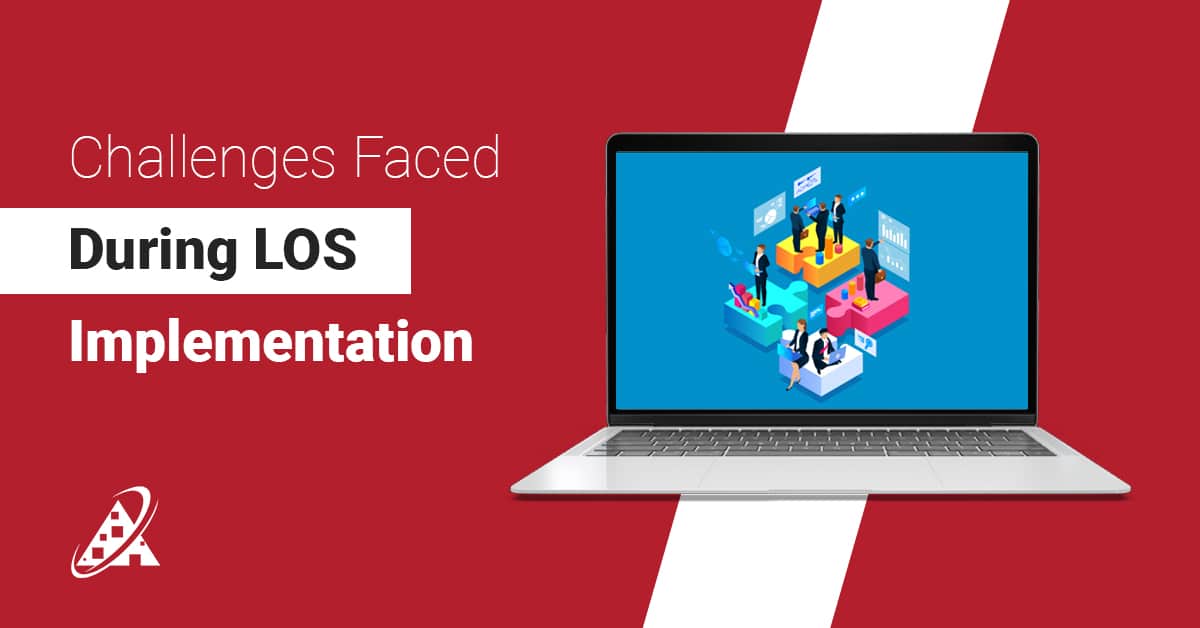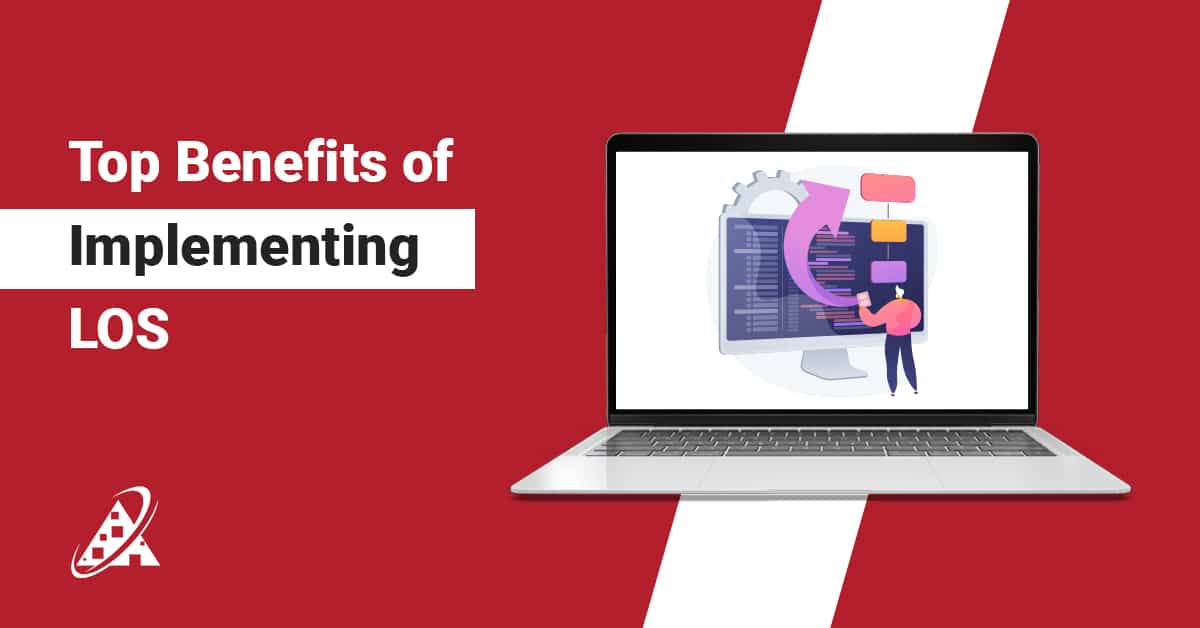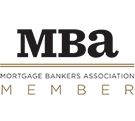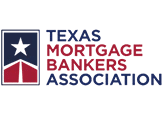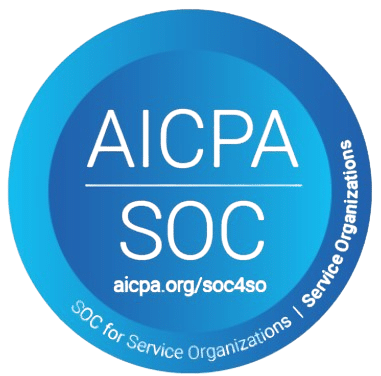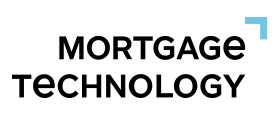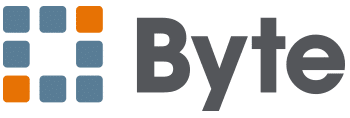The path to homeownership or real estate investment often involves navigating a maze of requirements and criteria, making it a daunting journey for many. But what if there were alternative routes allowing you to secure a mortgage without the conventional constraints of income verification, credit scores, or job history?
Welcome to the world of Non-QM (Non-Qualified Mortgage) products, a financial tool that offers newfound flexibility to diverse borrowers. In this blog, we explore the fascinating landscape of non-QM mortgages, shedding light on their benefits, risks, and suitability for various individuals, from self-employed entrepreneurs to real estate investors.
Everything in Short about Non-QM Loans
- Non-QM Loans Introduction
- Non-QM (Non-Qualified Mortgage) loans are an alternative for borrowers who need to meet the strict criteria of traditional Qualified Mortgages.
- Flexibility in Borrower Types
- Non-QM loans offer flexibility and cater to diverse borrowers, including self-employed individuals, real estate investors, and those with unique financial situations.
- Variety of Non-QM Loan Products
- Various non-QM loan products, such as Bank Statement Loans, Asset-Based Loans, and DSCR Loans, are available.
- Borrowers can choose the specific loan product that aligns with their financial needs.
- Consideration of Costs
- Non-QM loans may have higher costs due to perceived risk.
- Despite this, they serve as a viable alternative to traditional mortgages.
- Differences from Hard Money Loans
- Non-QM loans differ from hard money loans in accommodating a wider range of property types.
- They are suitable for primary residences, vacation homes, investment properties, etc.
- Importantly, they don’t require Private Mortgage Insurance (PMI).
- Bridge Between Traditional and Unique Financial Profiles
- Non-QM loans bridge the gap between the strict lending standards of Qualified Mortgages and the unique financial profiles of many borrowers.
- Path to Homeownership and Real Estate Investment
- These loans offer a path to homeownership and real estate investment without the rigid constraints of Qualified Mortgages.
- Guidance for Exploring Non-QM Financing
- To explore non-QM financing, borrowers should consult experienced loan specialists.
- It’s essential to compare loan offers and carefully consider terms and costs.
- Value of Non-QM Loans
- Ultimately, non-QM loans serve as a valuable tool for achieving real estate goals while embracing financial flexibility.
What Are Non-QM Loans?
Non-QM loans, short for Non-Qualified Mortgage loans, are a category of mortgage products that do not conform to the standards and criteria set by government-sponsored enterprises like Fannie Mae and Freddie Mac. These loans are considered non-traditional because they allow borrowers to qualify using alternative methods or documentation, in contrast to the stringent requirements of Qualified Mortgages (QM).
Here are the key characteristics and features of Non-QM loans:
- Flexible Qualification Criteria: Non-QM loans offer more flexibility in the qualification process. They are designed to accommodate borrowers who may not meet the traditional income, credit, or employment history criteria.
- Alternative Documentation: Borrowers applying for non-QM loans can provide alternative documentation to verify their financial standing. This can include bank statements, asset-based income, rental income, and other non-standard forms of income verification.
- Diverse Borrower Profiles: Non-QM loans cater to many borrowers, including self-employed individuals, real estate investors, retirees, and those with unique financial situations. They are precious for those who don’t fit the mold of a standard mortgage borrower.
- Specialized Products: Non-QM loans come in various specialized products, such as Bank Statement Loans, Asset-Based Loans, and Debt Service Coverage Ratio (DSCR) Loans. These products are designed to meet specific borrower needs.
- Higher Risk: Since non-QM loans deviate from traditional lending standards, they are often considered riskier for lenders. As a result, they may come with slightly higher interest rates and require larger down payments to mitigate the added risk.
- No Private Mortgage Insurance (PMI): Non-QM loans typically do not require Private Mortgage Insurance (PMI), which is commonly mandated for borrowers who make low down payments on conventional mortgages.
- Interest-Only Options: Some non-QM loans offer interest-only payment periods, providing borrowers with lower initial monthly payments, but it’s important to note that the principal balance isn’t reduced during this period.
- Non-Traditional Property Types: Non-QM loans can be used to finance a variety of property types, including primary residences, second homes, investment properties, multi-family homes, and more.
Risks of Non-QM Loans
The primary risk associated with Non-QM loans is the potential inability to repay the loan, particularly if the borrower’s financial situation changes significantly. Defaulting on any loan is a risk, but non-QM loans aim to strike a balance between flexibility and responsible lending.
The assessment of risks associated with non-QM loans is an important consideration for both borrowers and lenders. Here, we delve into the risks of Non-QM loans in more detail:
- Ability to Repay (ATR) Risk: Non-QM loans are not held to the same stringent Ability to Repay (ATR) standards as Qualified Mortgages (QM). The primary risk is that borrowers might overextend themselves financially and be unable to meet their loan obligations. This risk is particularly acute if their financial situation changes negatively, such as a loss of income or unexpected expenses.
- Variable Interest Rates: Some Non-QM loans, like Adjustable-Rate Mortgages (ARMs), may have variable interest rates that can increase over time. Borrowers may face payment shock if rates rise significantly, potentially leading to payment difficulties.
- Higher Interest Rates: Non-QM loans often come with higher interest rates compared to conventional loans. While this is a risk for borrowers because it increases the cost of borrowing, it also reflects the added risk that lenders take on with non-QM loans.
- Lack of Consumer Protection: Non-QM loans do not have the same level of regulatory protections as QM loans, which were established to ensure that borrowers are not placed in loans they cannot afford. Borrowers need to be vigilant and ensure they fully understand the terms and risks of non-QM loans.
- Loan Term and Structure: The structure and term of non-QM loans can vary significantly. Borrowers need to be aware of whether they are signing up for interest-only periods or other non-standard features that can impact their ability to build home equity and pay down the loan balance.
- Market Fluctuations: For non-QM loans tied to real estate investments, borrowers may be exposed to market fluctuations. A decline in property values can affect the resale value or rental income, impacting the borrower’s ability to service the loan.
- Credit Risk: While Non-QM loans are available to borrowers with less-than-perfect credit, credit risk is still involved. Borrowers with lower credit scores may face higher interest rates and may be at a higher risk of default.
- Change in Financial Circumstances: Life is unpredictable, and borrowers’ financial circumstances can change. Non-QM borrowers must be prepared for the possibility of job loss, medical expenses, or other unexpected financial challenges that could affect their ability to make mortgage payments.
- Legal and Regulatory Risk: Changes in lending regulations or legal requirements can impact Non-QM loans, potentially leading to adjustments in lending terms or increased scrutiny.
Non-QM loans offer flexibility to borrowers but also come with inherent risks. Borrowers considering non-QM loans should carefully evaluate their financial situation, understand the loan terms, and have a plan to mitigate potential risks. Lenders, on the other hand, should conduct thorough due diligence to ensure responsible lending practices and minimize risk exposure.
Who Should Consider a Non-QM Mortgage
Non-QM mortgages are recommended for various borrower profiles, including self-employed individuals, real estate investors, retirees looking for a second home, small to midsize business owners, and borrowers with unique financial situations, like those with recent credit events (bankruptcy, short sale, or foreclosure).
Non-QM mortgages can be an attractive option for a variety of borrower profiles due to their flexibility and alternative qualification criteria. Here’s a closer look at who should consider a Non-QM mortgage:
- Self-Employed Individuals: Self-employed borrowers often face challenges when applying for traditional mortgages because their income may not be as easily documented through W-2s or pay stubs. Non-QM loans, particularly Bank Statement Loans, allow self-employed individuals to use their business bank statements as proof of income, making homeownership more accessible.
- Real Estate Investors: Real estate investors, especially those who own multiple properties or generate rental income, can benefit from Non-QM loans like DSCR (Debt Service Coverage Ratio) Loans. These loans evaluate the rental income of investment properties rather than relying solely on personal income, which can be particularly advantageous for expanding investment portfolios.
- Retirees Seeking a Second Home: Retirees who are looking to purchase a second home, such as a vacation property or a retirement home in another location, may find Non-QM loans accommodating. These borrowers often have unique financial situations, such as retirement income and investments, which don’t fit the traditional mold.
- Small to Midsize Business Owners: Small business owners may have variable income streams and business-related deductions that complicate conventional mortgage income verification processes. Non-QM loans can be tailored to suit their needs, allowing for a more holistic evaluation of their financial situation.
- Borrowers with Recent Credit Events: Individuals who have experienced recent credit events like bankruptcy, short sale, or foreclosure may struggle to qualify for a QM loan due to strict credit score and history requirements. Non-QM loans provide an alternative for these borrowers, with some programs offering options even within a short period after such events.
- Borrowers with Unique Financial Situations: Non-QM loans are well-suited for borrowers with unconventional or unique financial situations. For example, those who rely on assets rather than traditional income sources can use Asset-Based Loans to secure financing.
- “Subprime” or “Non-Prime” Borrowers: Borrowers who narrowly miss the qualifications for traditional QM loans due to lower credit scores or higher debt levels can explore Non-QM options. These loans may offer more flexibility, albeit with slightly higher interest rates.
Non-QM mortgages open up opportunities for a diverse range of borrowers who don’t fit neatly into the standard lending criteria. Whether you have a non-traditional income structure, a recent credit setback, or unique financial circumstances, Non-QM loans provide a pathway to homeownership or real estate investment that might otherwise be elusive. It’s essential for these borrowers to work with knowledgeable loan officers to determine if a Non-QM mortgage is the right solution for their specific financial situation and goals.
Documentation for Non-QM Loans
Non-QM (Non-Qualified Mortgage) loan documentation differs from traditional mortgage loans. Here’s a breakdown of the typical documentation required for Non-QM loans:
- Bank Statements: Non-QM lenders may ask for bank statements covering a specific period, typically the last 12 to 24 months. These statements help verify cash flow, deposits, and overall financial stability. Bank Statement Loans are an example of non-QM loans that rely heavily on this documentation.
- Tax Returns: While Non-QM loans aim to be more flexible, some programs may still request tax returns. These returns are essential for self-employed borrowers, business owners, or those with irregular income streams. They provide a detailed financial history, deductions, and income sources.
- Asset Documentation: Non-QM borrowers may need to provide proof of liquid assets, including checking and savings accounts, investment accounts, or money market accounts. Lenders may evaluate these assets to assess financial stability and the ability to cover mortgage payments.
- Rental Income Documentation: For real estate investors applying for Non-QM loans like DSCR (Debt Service Coverage Ratio) Loans, rental income documentation is critical. This documentation confirms the cash flow generated by rental or investment properties and helps determine the borrower’s ability to manage multiple properties.
- Credit Report: While Non-QM loans are more lenient with credit requirements than traditional mortgages, lenders may still check the borrower’s credit report to assess creditworthiness.
- Trade Line Information: Non-QM lenders may require information on active and open trade lines. These can include credit cards, auto loans, and other forms of credit. Lenders use this information to evaluate the borrower’s overall credit profile.
- VISA or ITIN for Foreign National Loans: Borrowers applying for Foreign National Loans (ITIN loans) must provide proof of a valid VISA or VISA waiver, along with three active and open trade lines with a two-year history.
- Property Appraisal: While not documentation per se, Non-QM loans may require a property appraisal to determine the property’s value, especially for real estate investment loans.
It’s important to note that the documentation requirements can vary based on the type of Non-QM loan, the lender’s policies, and the borrower’s financial situation. Borrowers should work closely with loan specialists to understand and provide documentation for their Non-QM loan application.
Cost of Non-QM Mortgages
The cost of non-QM mortgages can differ from traditional mortgages due to the perceived higher risk associated with these non-traditional loan products. Here’s a closer look at the factors that contribute to the potentially higher costs of Non-QM loans:
- Higher Interest Rates: Non-QM loans often have higher interest rates than traditional mortgages. Lenders charge higher rates to compensate for the increased risk they assume when lending to borrowers with non-standard income documentation, credit profiles, or unique financial situations.
- Risk-Based Pricing: Non-QM lenders use risk-based pricing models to determine interest rates and fees. Borrowers with lower credit scores or less stable financial profiles may face even higher interest rates, reflecting the elevated risk.
- Larger Down Payments: Non-QM lenders may require borrowers to make larger down payments to mitigate the risk. While conventional mortgages may permit down payments as low as 3-5%, Non-QM loans often mandate higher down payments, typically 10% to 20% or more.
- Loan Fees: Non-QM loans may include additional fees or points. These fees can vary depending on the lender and the specific loan program. Borrowers should review the loan terms carefully to understand any associated costs.
- Private Mortgage Insurance (PMI): Traditional mortgages often require Private Mortgage Insurance (PMI) if the down payment is less than 20% of the home’s purchase price. Non-QM loans typically do not require PMI, which can save borrowers money.
- Variable Interest Rates: Non-QM loans, such as Adjustable-Rate Mortgages (ARMs), can have variable interest rates that may increase over time. While these loans may start with lower rates, the potential for future rate hikes can lead to higher long-term costs.
- Risk Assessment: Lenders typically perform a more detailed risk assessment for non-QM borrowers, which can result in higher overall borrowing costs.
It’s important to note that the actual cost of a Non-QM loan can vary depending on factors such as the borrower’s creditworthiness, down payment, loan program, and the lender’s policies.
While Non-QM loans may be more expensive than traditional mortgages, they provide an avenue to homeownership or real estate investment for borrowers who do not meet the strict criteria of Qualified Mortgages. Borrowers considering non-QM loans should carefully evaluate their financial situation, compare loan offers from multiple lenders, and work with loan specialists to understand the full cost implications.
Calculation of Non-QM Mortgage Payments
The calculation of payments for Non-QM (Non-Qualified Mortgage) loans is similar to that of traditional mortgages, with the acronym PITI used to break down the different components of the monthly mortgage payment:
- Principal: This is the portion of the monthly payment that reduces the loan balance. As borrowers make mortgage payments, the principal balance decreases, leading to more ownership of the property over time.
- Interest: Interest is the cost of borrowing the money from the lender. The interest rate is determined at the outset of the loan and is used to calculate the portion of each payment that covers the interest.
- Taxes: Property taxes are assessed by local government agencies and are typically collected as part of the monthly mortgage payment. The lender holds these funds in an escrow account and pays the property taxes on behalf of the borrower when they are due.
- Insurance: Homeowners insurance is essential to protect the property and the lender’s investment. It covers damages to the property from a range of perils. Like property taxes, homeowners insurance is typically collected as part of the monthly mortgage payment and paid from an escrow account.
The total monthly mortgage payment (PITI) is determined based on the loan amount, interest rate, loan length (loan term), property taxes, and homeowners insurance.
It’s important to note that while the basic calculation of Non-QM mortgage payments is similar to traditional mortgages, Non-QM loans may offer unique features that can impact payment structures. For example, some Non-QM loans may include interest-only periods during which borrowers only pay the interest portion of the mortgage, not the principal, potentially resulting in lower initial payments.
Borrowers considering non-QM loans should carefully review the terms and payment structure of their specific loan program to understand how payments will be calculated and any variations from traditional mortgage payment calculations.
Comparison to Hard Money Loans
Non-QM loans differ from hard money loans, and they also do not typically require Private Mortgage Insurance (PMI). Here’s a more detailed comparison between Non-QM loans and hard money loans, as well as an explanation of the PMI aspect:
- Purpose:
- Non-QM Loans: Non-QM loans are versatile and can be used for various purposes, including financing primary residences, second homes, and investment properties. They are not restricted to just investment properties.
- Hard Money Loans: Hard money loans are primarily used for real estate investment purposes, often involving fix-and-flip projects or purchasing distressed properties.
- Down Payments:
- Non-QM Loans: Non-QM loans can have varying down payment requirements, typically ranging from 10% to 20% or more, depending on the lender and the specific loan program.
- Hard Money Loans: Hard money loans often require even larger down payments, commonly in the range of 25% to 30% or more. These loans are considered high-risk, and lenders require substantial investor equity.
- Interest Rates:
- Non-QM Loans: Non-QM loans may have higher interest rates compared to traditional mortgages, but they are typically lower than the rates associated with hard money loans.
- Hard Money Loans: Hard money loans are known for their high interest rates, reflecting the elevated risk for lenders. Rates can be significantly higher than those for non-QM loans.
- Loan Terms:
- Non-QM Loans: Non-QM loans may offer more flexibility in loan duration, with options ranging from shorter terms to more traditional 30-year mortgages.
- Hard Money Loans: Hard money loans are typically short-term loans, often with terms of one to three years. They are designed for quick property turnover.
PMI for Non-QM Mortgages
Private Mortgage Insurance (PMI) is a standard requirement for conventional mortgages when borrowers make down payments of less than 20% of the home’s purchase price. PMI protects the lender in case the borrower defaults on the loan.
Non-QM loans, however, do not typically require PMI. Instead, non-QM lenders may have their own risk management strategies and requirements to account for lower down payments. These strategies could include adjusting interest rates, down payment requirements, or loan terms.
Because Non-QM loans are not subject to the same regulatory requirements as Qualified Mortgages (QM), lenders have greater flexibility in establishing their lending criteria, which can vary from one lender to another. Borrowers should work closely with their chosen Non-QM lender to understand the specific terms, requirements, and risk management strategies associated with their loan.
Types of Properties Eligible for Non-QM Loans
Non-QM loans indeed offer a wide range of property options for borrowers. Here’s a more detailed breakdown of the types of properties eligible for Non-QM loans:
- Primary Residences: Non-QM loans can be used to purchase primary residences, which are homes where the borrower intends to live full-time.
- Secondary Residences: Borrowers can also use non-QM loans to finance secondary residences. These are properties where the borrower may not live full-time but uses them as a second home.
- Vacation Homes: Non-QM loans are suitable for purchasing vacation homes, which are typically used for recreational getaways and not intended for year-round living.
- Investment Properties: Real estate investors can utilize non-QM loans to acquire investment properties. These properties are bought to generate rental income or capital appreciation.
- Single-Family Homes: Non-QM loans are available for single-family homes, which are standalone residential properties designed for one family.
- Multi-Family Homes: Borrowers can use Non-QM loans to purchase multi-family homes, such as duplexes, triplexes, or apartment buildings. These properties offer multiple rental units.
- Townhomes: Townhomes are eligible for non-QM financing. These attached homes share walls with neighboring units but are individually owned.
- Condos: Condominiums are another property type for which non-QM loans are available. Condos are individual units within a larger complex, and ownership typically includes shared spaces and amenities.
- Manufactured Homes: Non-QM loans can be used to purchase manufactured homes, which are prefabricated structures assembled on-site. Borrowers should check with lenders to ensure that the specific type of manufactured home is eligible for non-QM financing.
The flexibility in property types is one of the advantages of non-QM loans. Borrowers with diverse real estate goals, whether they seek a primary residence, a vacation property, or a real estate investment, can explore non-QM loan options that suit their specific needs. Borrowers must work with experienced loan officers and lenders specializing in non-QM financing to navigate the available programs and find the right fit for their property purchase.
Disclaimer: The information in this blog is for general informational purposes only and should not be considered as professional advice. Terms and conditions for Non-Qualified Mortgage (Non-QM) loans can vary among lenders. Consult with financial experts and conduct research before making any financial decisions. This blog does not endorse specific products or lenders.




